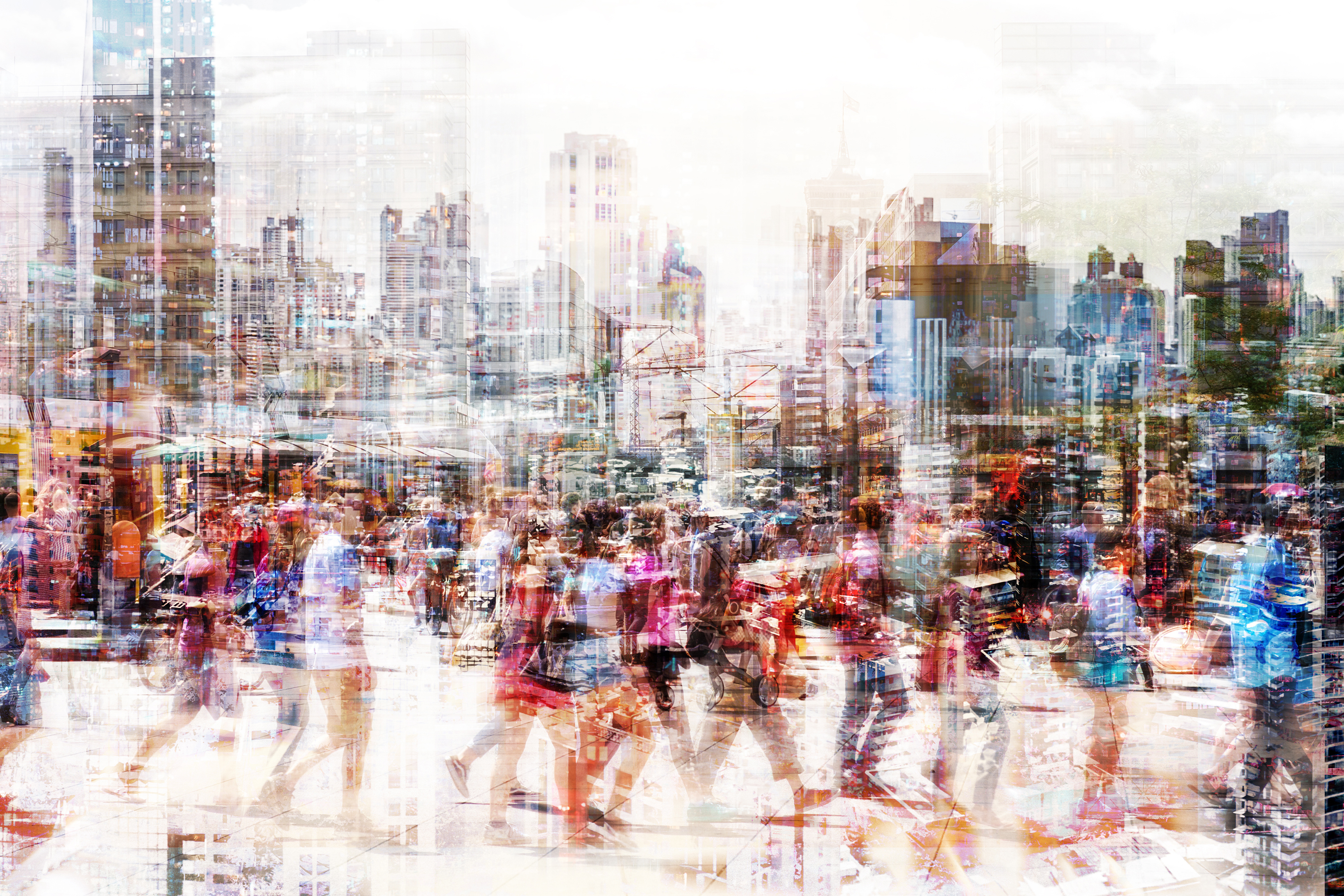The new-age technology saving the high street
Innovation has eroded the high street, but are our physical shops in terminal decline or ready for a technology-led revival?


The high streets that once breathed life into our towns and cities are in decline. Household names including chains, banks and other institutions continue to close branches or vanish from a strong bricks-and-mortar presence, instead pivoting online or closing altogether.
While some locales thrive on a heady mix of independent stores, these are very much the exception rather than the general experience. Technology has arguably been the driver for this change, powering the future of shopping by forcing many online or even out of business thanks to the likes of Amazon.
Now, ironically, technology might be able to reverse the tide. From augmented reality (AR) to public Wi-Fi, what are the special, unique gifts modern innovations can offer businesses to pave the way for a long awaited high street revival?
How technology killed the high street
Technology has played a significant part in pulling people away from the high street. Online shopping for everything from groceries to garden furniture is a lure. It’s easier for the consumer, while price comparison sites and vouchers can generate significant financial savings. It’s especially pertinent in the current economic climate.
The case for store operators is complex: small outlets with local brands can sell far and wide, increasing revenues – if they can invest enough in back-end technology and the supply chain. Large stores can save on rent and staffing, but still need to invest in pickers, transportation, technology and marketing – to name just a few variables.
Still, technology has weaned many shoppers off the high street, and many retailers seem to find the online model more profitable. This is especially true given large online retailers also don’t need to pay business taxes at the same rate as those that rely on a physical presence to trade. The knock-on effect, though, has been a recession of physical presence in British high streets and either closures or migrations into cyber space.
Using technology to get us offline
Nonetheless, retailers can refine their models to support the high street, and they’ve good reasons to want to. Marcel Hollerbach, chief innovation officer at Productsup, for example, offers one good reason when he speaks about brand loyalty. He points out that buying online is often a snap decision based on targeted social ads or other marketplaces rather than the result of product comparison and research. You’re more likely, therefore, to get a meaningful interactions in the physical world. As he puts it: “Leveraging innovative technologies to create purpose for people to walk into high street stores provides more opportunity for long-term customer relationships to form.”
Sign up today and you will receive a free copy of our Future Focus 2025 report - the leading guidance on AI, cybersecurity and other IT challenges as per 700+ senior executives
There are examples of high street chains using tech to push the boundaries of encouraging people to spend time in-store – including getting rather “cutting edge” about it all.
Hollerbach points us to Burger King’s use of non-fungible tokens (NFTs) in its Keep it Real Meals campaign. “Consumers could scan a QR code on the side of their Burger King meal box to access an exclusive digital collectible, and if they completed an NFT set, they would win a real-world prize, such as free Whoppers,” he explains. By implementing gamification technology, he continues, Burger King generated a new purpose for consumers to visit its thousands of locations and purchase meal boxes.
Similarly, in New York, Zara put a digital art installation in a window display. It was entirely possible to view this without entering the store, but was inevitably likely to bring a handful of customers into the store, who then made purchases.
The high street is more than shopping
The next wave of technologies has more uses in the high street than just attracting customers into stores to make purchases. AR has been used as part of the experience at historic sites for many years, and, in this context, it’s not really seen as cutting edge any more. Maybe, though, it also has a place in the high street. Achille Traore, CEO of White Label Loyalty, certainly thinks so, telling IT Pro that treasure hunts using AR – with the ultimate goal of winning rewards – can encourage people to explore more of their local areas than they might have otherwise done. This inevitably includes visiting potential eating or retail locations.
Free city-wide public Wi-Fi, meanwhile, which has been a point of discussion for many years, still has the potential to encourage people to spend time in town centres – and there are numerous examples of how this works in practice. One such case is in North Yorkshire, where 20 market towns are benefitting from a North Yorkshire County Council scheme. In partnership with NYnet, the authority is rolling out infrastructure to promote more digital and physical activity in areas in need of greater economic activity.
Even this only scrapes the surface, though. As Marcel Hollerbach tells us: “There’s a tremendous opportunity for the high street to partner with local artists to bring innovative art experiences into their stores.”. Traore adds more context, telling us it is possible to “create interactive gamified apps to run competitions where customers can win NFTs from local artists. These could be unlocked by completing challenges or visits to certain locations at the high street.”
While innovation over the last 20 years has moved aggressively to shift commerce online, the next generation of technologies might do the opposite. With COVID-19, too, working to ramp up a desire for physical experiences and in-person interactions, defying trends like the metaverse, the scene is primed for innovation to force people back offline.
It's difficult for individual stores to implement the kinds of expansive initiatives that could take advantage of the broadest benefits technology could offer the high street. Local Authorities, perhaps buying in consortia, and with central government funding, alongside partnerships between Business Improvement Districts, arts and cultural organisations, and the social, voluntary and charity sectors, have it all to play for when thinking about how technology could save their high streets.

Sandra Vogel is a freelance journalist with decades of experience in long-form and explainer content, research papers, case studies, white papers, blogs, books, and hardware reviews. She has contributed to ZDNet, national newspapers and many of the best known technology web sites.
At ITPro, Sandra has contributed articles on artificial intelligence (AI), measures that can be taken to cope with inflation, the telecoms industry, risk management, and C-suite strategies. In the past, Sandra also contributed handset reviews for ITPro and has written for the brand for more than 13 years in total.
-
 The NCSC touts honeypots and ‘cyber deception’ tactics as the key to combating hackers
The NCSC touts honeypots and ‘cyber deception’ tactics as the key to combating hackersNews Trials to test the real-world effectiveness of cyber deception solutions have produced positive results so far
-
 Can data center supply keep up with AI demand?
Can data center supply keep up with AI demand?News New research from Goldman Sachs points to a precarious balancing act for data center operators